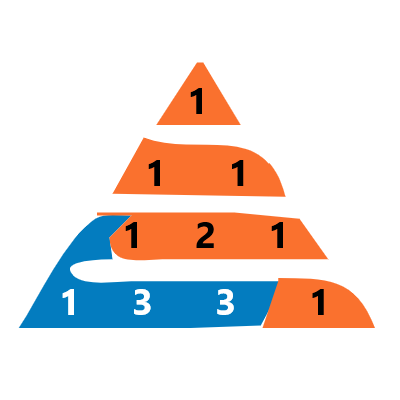Wave Motion Problems and Objective Type Questions
Solved Problems for Wave Motion
1. the frequency of tuning fork is 400 Hz and the speed of sound in air is 320 m/s, find how far the sound travels while the tuning fork makes 30 vibrations.
Solution: Given, Frequency, n = 400Hz velocity of sound, v = 320 m/s wavelength, λ = ?
number of vibrations made= 30
By using the formula, v = nλ
λ = v/n =\frac{320}{400}=0.8m
Distance travelled by sound = Wavelength X No. of Vibrations
= 0.8 X 30
= 24 m
2. A body vibrating with a certain frequency sends waves 1.5 m long through medium A and 2.0 m long through medium B. The velocity of waves in A is 120 m/s. Find the velocity in B.
Solution: let frequency of the vibrating body = n
In the medium A. wavelength, λ1= 1.5 m
velocity, v1 = 120 m s−1
n = v1 / λ1
\frac{120}{1.5}= 80 Hz
In medium B. Frequency, n = 80Hz
wavelength, λ2 = 2.0 m
therefore, velocity, v2 = n X λ2
= 80 X 2.0
= 160.0 m s−1
hence velocity of the waves in medium B = 160 m/s
3. A tuning fork produces sound waves of wavelength 68 cm. If the speed of sound is 340 m/s. What is the frequency of the tuning fork?
Solution: Here, wavelength, λ = 68 cm =0.68 m
velocity of sound, v = 320 m s−1
Applying the relation, v = nλ
340 = n X 0.68
n = \frac{340}{0.68}=500 Hz.
4. If a tuning fork vibrates with a frequency of 512 Hz to produce sound waves which travel with a velocity of 330 m s−1 , calculate the wavelength ?
Solution: Here, frequency, n = 512 Hz
velocity of sound, v = 330 m s−1
Wave length, λ = ?
using the relation , v = nλ
λ = \frac{v}{n}=\frac{330}{512}=0.644m5. A tuning fork makes one complete vibration in 1/200 second and the velocity of sound waves is 340 m/s. Calculate the wavelength of the sound given out by the tuning fork.
Solution: velocity of sound, v = 340 m/s Time Period, T = 1/200 second
therefore, Frequency, n = 1/T = 200 vib./second Wave length, λ = ?
Applying the relation, v = nλ λ = v / n =340/200= 1.7 m
6.Find the frequency, period and wave number for a light of wavelength 6000 A.U.
Solution velocity of light c=v\lambda Where v is the frequency of light wave and \lambda the wavelength
v=\frac{c}{\lambda}=\frac{3\times10^8}{6000\times10^{-10}}=5\times10^{14}HzPeriod ,\; T= \frac{1} {v}=\frac{1}{5 \times 10^{14}} =2 \times10^{-15} \, secondWave\, Number,\; = \frac{1} {\lambda}= \frac{1} {6000 \times 10^{-10}}=1.7 \times 10^{6} \,m^{-1}1. In a mechanical transverse wave, the particles of the medium
a. Vibrate in a direction perpendicular to the direction of propagation of wave.
b. Vibrate in a direction parallel to the direction of propagation of wave.
c. Move in a circle.
d. Move in ellipse.
2.One cannot observe the phenomenon of sound waves
a.Refraction b.Interference
c.Diffraction d. Polarisation
3.Water waves are
a. Longitudinal b. Transverse
c. Both longitudinal and transverse d. None of these
Transverse waves cannot be produced in gases because gases-
a. are light b. have no elasticity of shape
c. can flow quickly d. are compressible
5. In a mechanical longitudinal wave, the particles of the medium
a. Vibrate in a direction parallel to the direction of propagation of wave.
b. Vibrate in a direction perpendicular to the direction of propagation of wave.
c. Vibrate in circles.
d. None of these.
